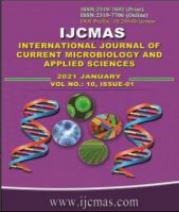


 National Academy of Agricultural Sciences (NAAS)
National Academy of Agricultural Sciences (NAAS)

|
PRINT ISSN : 2319-7692
Online ISSN : 2319-7706 Issues : 12 per year Publisher : Excellent Publishers Email : editorijcmas@gmail.com / submit@ijcmas.com Editor-in-chief: Dr.M.Prakash Index Copernicus ICV 2018: 95.39 NAAS RATING 2020: 5.38 |
Tilapia ranks second among the most cultured fish globally. It is also the most important farmed non-cyprinid fish accounting for over 20% of the global aquaculture production (6.6 million tonnes). To make up for anticipated deficits or losses in wild harvest, the tilapia industry is retorting, not only in its former strongholds throughout Southeast Asia, but also in the Americas and Africa. The candidate aquacultured species of the tilapiine family is the Nile tilapia (Oreochromis niloticus), which is known for its superior growth rates and attainment of large market sizes over a wide range of environmental parameters. Its disease resistance and ability to efficiently flex its feeding habits also make it an ideal species for culture. The increased production in tilapia has been recognized on extensive research efforts, with the most significant gains achieved by utilizing monosex production techniques. Monosex tilapia is a new technological product in this aquacultural era.
 |
 |
 |
 |
 |